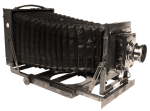Metadata for Photos and Other Media Computer Files.
What is this thing called metadata
Metadata is generally defined as data that describes other data. Concerning media files though, it is considered as information attached to that file which may define and describe an image or audio file etc. and may also be used to control how it may be used.
How do we use it and why is it important?
If you play around with editing photos in your computer or have even dabbled with creating mp3 sound files to use on your phone or other media device, you have possibly come across metadata. Probably if you knew no better you would find this highly confusing and just another example of techno talk. The whole subject of metadata however is not that hard. You can get away with a general amount of knowledge and still manage to appear to be up with it. An internet search can turn up quite a lot, but let us do a run down without getting too technical.
Digital Photographs
If you have been sorting and editing digital photos for a while, you have possibly come across computer programs that promise the world as far as keeping track of photos is concerned. The bald fact is that it can be hard work to do it properly. That in part then, is where metadata comes in for photos.
One of the problems is finding a computer program which handles metadata correctly. The gold standard is Adobe Photoshop and others very close to it within the Adobe suite. Unfortunately, I cannot here go into a detailed analysis of Photoshop, or any other similar programs and the way in which they each handle the metadata standards. That would fill a book. But from my experience, the main point is simply the way in which they work with the standards. There are programs that do a good job of sorting, editing and labeling your photos, but one day you may find that another program cannot read any or all of the information you have attached to those files. So choose your program carefully.
But what can you do with metadata? Within a part of the actual photo computer file a vast list of information may be recorded. It does not take up much space. Everything from the date to location, copyright holder, description, camera settings and much more. There will be items relating directly to the camera itself and generally this cannot be changed. This called EXIF data and it can be easily viewed by looking at the properties of the file. In Windows this can be done in Explorer.
There will also be items which you can add yourself. Often editing software will allow you to add items of information to a number of photos in bulk, allowing you to then come back to add other individual details. This is refereed to as IPTC data. Information like this is useful for searching.
Audio MP3 Files
Metadata attached to MP3 audio files is used by player software in mobile phones and other devices to play individual music tracks in the correct order as part of an album. The data packet needs to list things like track title, number, album name and artist etc.. If the correct data is not present under the correct headings or fields, a music track will not play in its proper order or appear listed in its proper place.
Unfortunately although there is a standard as such, the way in which media players interprete that data and also the column headings used for some fields in those players can be treated a little differently. To generate the data needed, you could use say Windows Media Player and I often find this player can be useful to test the data in a group of MP3 music files. Just remember that even Windows Media Player still treats and labels some fields differently.
A good place to start in generating MP3 metadata is a free program developed by enthusiasts called MP3Tag. This is quite powerful and can take a bit to learn properly, but it does allow for the generating of basic metadata without too many tears.
Other Uses
Metadata can also be attached to other computer files used for audio and video of various types. Much of the usage here though relates to information useful to professional producers. Other computer file types may also include attached data. But the main ones which would affect most people would be those above.


